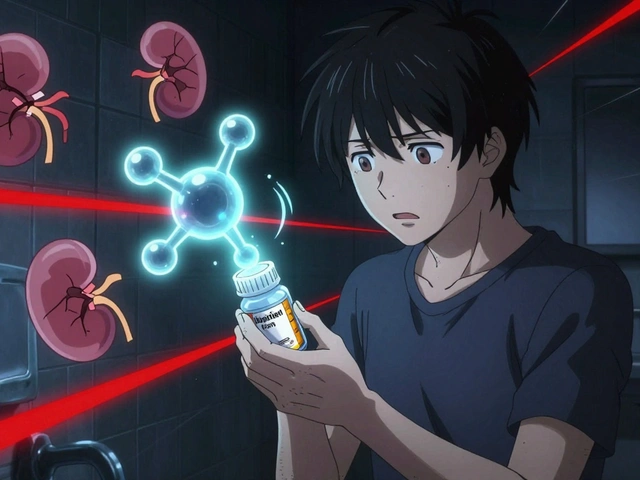ADPKD Treatment: Options, Strategies, and What to Expect
When dealing with ADPKD treatment, the medical approach aimed at slowing cyst growth and preserving kidney function in autosomal dominant polycystic kidney disease. Also known as ADPKD therapy, it combines drugs, lifestyle changes, and, when needed, renal replacement options. The condition itself, polycystic kidney disease, is a genetic disorder that leads to numerous fluid‑filled cysts in both kidneys, ultimately reducing filtration capacity. One of the first‑line medicines, Tolvaptan, a vasopressin V2‑receptor antagonist approved to slow cyst expansion, directly targets the underlying cellular signaling. Understanding ADPKD treatment helps you plan ahead and choose the right combination of interventions.
Core Management Pillars
The most effective ADPKD treatment plans rest on three pillars: pharmacology, blood‑pressure control, and lifestyle modification. Pharmacology includes not only Tolvaptan but also antihypertensive agents such as ACE inhibitors or ARBs, which reduce intraglomerular pressure and delay kidney decline. Blood‑pressure control itself is a separate entity, hypertension management, essential for protecting remaining nephrons, and it often requires dose titration based on regular monitoring. Lifestyle tweaks—low‑salt diet, adequate hydration, and moderated protein intake—act as a supportive layer that enhances drug efficacy and keeps cyst growth in check. Together, these elements create a feedback loop: better blood‑pressure control improves drug response, and appropriate diet reduces the need for higher medication doses.
When cyst burden reaches a critical point, renal replacement becomes unavoidable. This brings us to two major related entities: dialysis, a mechanical filtration process that sustains patients until transplant and kidney transplant, the definitive solution that restores normal kidney function. Dialysis can be performed hemodialytically or peritoneally; the choice depends on vascular access, lifestyle, and patient preference. Kidney transplant, on the other hand, offers superior quality‑of‑life metrics but requires a suitable donor and lifelong immunosuppression. The decision matrix often hinges on the rate of eGFR decline, comorbidities, and personal goals, creating a clear semantic link: ADPKD treatment necessitates renal replacement planning once conservative measures fail.
Beyond the medical realm, patient education plays a pivotal role. Knowing when to schedule imaging, how to interpret cyst growth rates, and when to alert a nephrologist can shift outcomes dramatically. Genetic counseling, a related service, helps families understand inheritance patterns and consider testing for at‑risk relatives. This counseling supports the broader treatment ecosystem by enabling early detection, which in turn makes interventions like Tolvaptan more effective. In practice, a well‑informed patient will track blood pressure, adhere to medication schedules, and maintain a kidney‑friendly diet—all actions that reinforce each other and keep disease progression as slow as possible.
Below you’ll find a curated list of articles that dive deeper into each of these aspects—drug specifics, diet tips, dialysis options, transplant experiences, and real‑world patient stories. Whether you’re just diagnosed or looking to fine‑tune an existing plan, the resources ahead give practical guidance you can act on right away.

Natrise (Tolvaptan) vs Other ADPKD Treatments - Pros, Cons & Comparison
A detailed comparison of Natrise (Tolvaptan) with other ADPKD therapies, covering mechanisms, efficacy, side effects, cost and patient‑specific considerations.
Continue Reading



